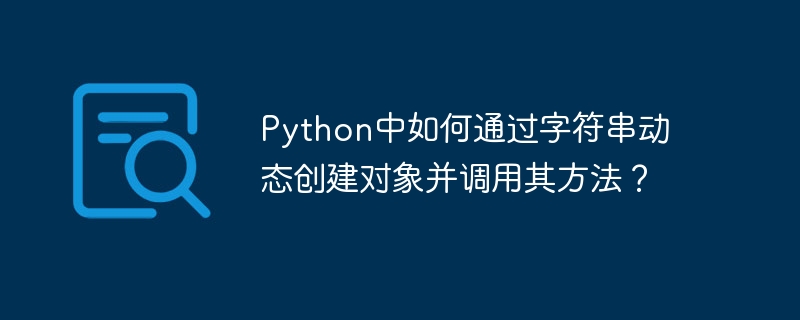
本文介紹如何在python中通過字符串動態(tài)創(chuàng)建對象并調(diào)用其方法,這在需要根據(jù)配置或運行時信息靈活處理對象時非常有用。 直接使用字符串無法實現(xiàn),需要借助Python的反射機制。
核心在于getattr函數(shù),它接收對象和屬性名(字符串)作為參數(shù)。如果屬性存在,則返回屬性值;否則,拋出AttributeError異常。結合importlib.import_module動態(tài)導入模塊,我們可以實現(xiàn)動態(tài)創(chuàng)建和調(diào)用。
示例:
假設我們有兩個文件:my_module.py定義了類和函數(shù);main.py負責動態(tài)調(diào)用。
立即學習“Python免費學習筆記(深入)”;
my_module.py:
class MyClass: def __init__(self, name): self.name = name def my_method(self): print(f"Hello, {self.name}!") def my_function(): print("This is a function.")
main.py:
import importlib module_name = "my_module" class_name = "MyClass" method_name = "my_method" function_name = "my_function" # 動態(tài)導入模塊 module = importlib.import_module(module_name) # 動態(tài)創(chuàng)建對象并調(diào)用方法 try: my_class = getattr(module, class_name)("World") getattr(my_class, method_name)() # 調(diào)用方法 # 動態(tài)調(diào)用函數(shù) getattr(module, function_name)() except AttributeError as e: print(f"Error: {e}")
運行main.py將輸出:
Hello, World! This is a function.
這段代碼演示了如何通過字符串module_name, class_name, method_name和function_name動態(tài)導入模塊,創(chuàng)建對象并調(diào)用其方法以及函數(shù)。 try…except塊處理了可能出現(xiàn)的AttributeError異常,提高了代碼的健壯性。 這為構建靈活的Python應用程序提供了有效途徑。
? 版權聲明
文章版權歸作者所有,未經(jīng)允許請勿轉載。
THE END


















